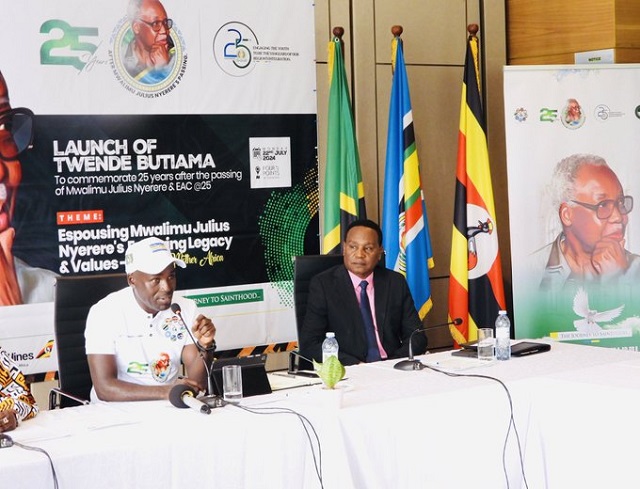
Kampala, Uganda | THE INDEPENDENT | Youth proponents advocating for the political integration of the East African region are striving to reawaken the original spirit of the regional bloc through a visit to the burial site of Julius Nyerere. Nyerere, the former Tanzanian independence leader, is believed to be the original vision bearer of a single East African state, a vision yet to be realized more than half a century later.
The youth’s visit to his burial site coincides with the 25th anniversary of revived efforts for the region’s integration, the same period since Nyerere’s death. Despite strides made towards integration, the youth argue that the undermining of the basic pillars of the community’s protocols, such as the free movement of goods, people, and services, deviates from the original spirit.
At the launch of the inaugural pilgrimage program, Maj. Gen. Paul Kisesa, Tanzania’s high commissioner to Uganda, highlighted Nyerere’s unwavering belief in East African unity. Nyerere even delayed Tanganyika’s independence to wait for Uganda and Kenya to start as a single state. Although the attempt failed, Nyerere championed the unification of Tanganyika and Zanzibar into present-day Tanzania, embodying the spirit of a borderless Eastern Africa. Kisesa emphasized that these values should be emulated for a better Africa.
Prof. Mwambutsya Ndebesa, a renowned historian, explained the East African region metaphorically as a computer with only hardware (borders created by colonialists) but lacking a unified leadership system (software). He stressed that a functioning computer requires both hardware and software, and the sense of East African nationhood is still missing. Ndebesa believes events like the planned pilgrimage contribute to unifying the region and establishing an African-led leadership system, which Nyerere envisioned.
He challenged the youth to take up the mantle for a unified Eastern Africa, viewing it as a generational mission. He emphasized that the visit will be a reflective moment for the youth to actively participate in this cause rather than being passive observers.
Dr. Suzan Muwanga, the executive director of the Julius Nyerere Leadership Centre, acknowledged the gap between the grown-ups and the youth. The center is working hard to bridge this gap through various interventions that foster dialogue and meaningful conversations between different segments of society. She urged the youth not to back down from the goal of a borderless Eastern Africa due to its immense advantages and committed the center’s support for this cause.
Ronex Kisembo, the team leader of Africa Mashariki Fest, announced that the pilgrimage, entitled “Twende Butiama,” is scheduled to start on 12th October 2024. Butiama is the birthplace and burial site of the late Nyerere. The inaugural pilgrimage is themed “Espousing Mwalimu Nyerere’s Enduring Legacy and Values – Lessons for Mother Africa.”
Up to 200 youth will participate in the visit, blessed by the living spouses of the original framers of the EAC, including Miria Obote, Ngina Kenyatta, and Maria Nyerere. Kisembo emphasized that reflecting on Nyerere’s legacy is essential to refocus on tackling the challenges facing Africa today.
****
URN
 The Independent Uganda: You get the Truth we Pay the Price
The Independent Uganda: You get the Truth we Pay the Price



